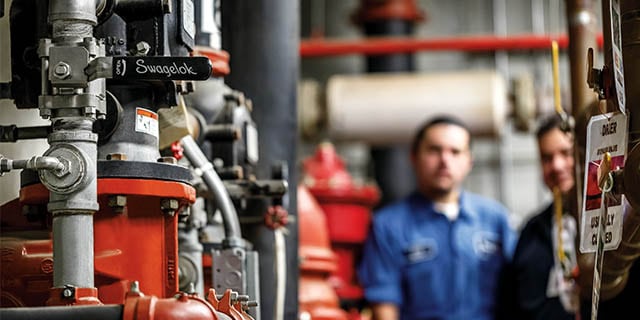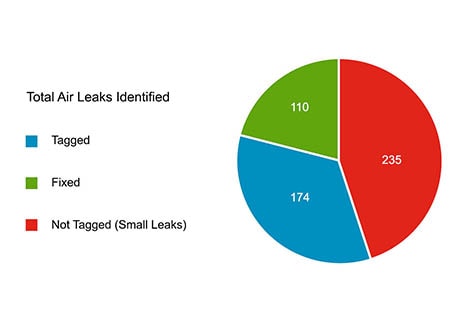Case Study: Fluid Systems Evaluation and $500,000 in Savings

Case Study: Fluid Systems Evaluation and $500,000 in Savings
Let’s face it – fluid systems can be complex and demanding to get just right. Maybe you’re dealing with persistent leaks, facing an increasing workload with limited internal resources, or any number of other challenges. You have a lot of responsibilities and ever-increasing pressure to maximize output, reduce cost, and avoid downtime.
You' re not alone.
Recently, our expert team of Field Engineers helped support one of the largest paper mills in the U.S. who was experiencing those same issues. We conducted a Fluid System Evaluation and Advisory Service on their compressed gas and steam systems with the following key objectives in mind:
- Explore and Identify system leaks across the campus
- Prioritize and tag leaks that significantly impact operating costs
- Instruct company personnel on which leaks need to be repaired
- Document and capture key findings.
What Did We Find Out?
Miles of pipe were inspected, thousands of stairs were climbed, Fitbit step goals were crushed. Aside from our team getting a killer workout in for the week, team Swagelok Northwest (US) found and tagged over 170 compressed air leaks and 40 steam leaks. Here’s the kicker: The total energy savings by addressing these leaks is over $500,000 per year. That’s right, half a million in savings.
Working hand-in-hand with the customer, our Field Engineers helped instruct company personnel on repairing 110 leaks in real-time. Saving the customer nearly $9,000 annually. Most of the fluid system leaks were caused by:
- Failures with regulators
- Air dryers/coalescers
- Rubber Hoses
Matt and Benny, two of our Field Engineers inspect a fluid system
$500,000 in Energy Loss? Now What?
Following a full week of onsite evaluation, our team put together a detailed roadmap of recommendations to help the customer improve the efficiency of their facility and generate a significant amount of annual savings. Strategies for improvement included appropriate product selection for each specific application, proper installation standards, training, and suggested maintenance schedules. Here’s a more detailed breakdown:
- Prioritize and address identified leaks
- Select high-quality products fit for the application
- Consider using metal-braided hoses, rather than rubber hose for improved durability
- Proper assembly/installation training for all plant personnel
- Preform regular/preventative maintenance
- Perform a steam trap survey
- Review insulation standards within the facility
The truth is, your fluid system doesn’t have to put you under so much pressure. With regular maintenance and inspection, proper training, the right components, and a knowledgeable partner, you’ll have a plan in place that is sure to reduce cost and save on downtime. For help with product selection, training, and inspections, contact us today.
Remember, you’re not alone.


